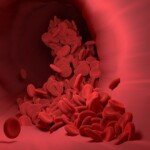The Art of Bending Perfect: Explain the Unlocking Accuracy of CNC Folding
In the demanding world of metal manufacturing, precision is not only desirable. This is very important. When complex angles, tight tolerances and consistent repeatability are not negotiable, CNC folding Appears as the cornerstone of complex sheet metal manipulation. This complex process powered by Computer Numerical Control (CNC) goes beyond traditional bending and provides manufacturers with unparalleled accuracy and versatility. Let’s dive into how CNC fold works and why it represents such a significant leap.
Beyond the Hammer: CNC Folding Revolution
Imagine bending the metal not by brute force or basic fixtures, but by the consistent guidance of a computer program. This is the essence of CNC folding. It utilizes advanced news brakes equipped with sophisticated back hills and programmable tools:
- Digital Blueprint: The process begins with detailed CAD (Computer Aided Design) part geometry. Dedicated CAM (Computer Aided Manufacturing) software translates this design into an accurate description of CNC Press Brake.
- Precision Machine: Modern CNC news brakes are a miracle of engineering. Their characteristics are:
- Programmable backball: A positioning system that controls distance metal plates is inserted into each bent machine, indicating the position of the bend line with extremely high accuracy.
- CNC controller: The brain of surgery. It can explain the CAM program, precisely controlling the defender’s movement, RAM stroke depth, speed, and even the pressure applied.
- Upper and Lower Tools: The hole puncher (upper tool) presses the metal into the mold (lower tool) to create a bend. The CNC system allows for fast, precise tool replacement, and can accommodate a variety of bending angles and radii.
- Advanced Sensing: Many high-end machines incorporate angle measurement systems, such as lasers or probes, to monitor bending in real time and perform micro-correction automatically.
- Superb curves: The operator secures the sheet metal to the rear guard. Controller command RAM drops. Punch the holes to contact the metal, force it accurately into the mold cavity with the depth and angle of the programming. This sequence requires repetition for each bend.
Where CNC folds really shine: Unlock function
The integration of CNC transforms folding from skilled craftsmanship to controlled science, unlocking capabilities through manual methods:
- Micron-scale accuracy and repeatability: Consistently achieving tolerances to bending and partial portions down to ±0.1 mm or better. Once programmed, the same parts are produced perfectly every time.
- Complex geometric shapes make it simple: Multiple curved complex parts with different angles can be easily handled even with challenging U-shaped or complex flanges. CNC calculates sequences and positions with precision.
- Unparalleled consistency eliminates variability: In the bending process itself, human errors are actually eliminated. Quality remains unchanged throughout the production process.
- Revolutionary efficiency and speed: Quick programming, quick tool changes (usually automated), minimum set-up time for repeated jobs, and high molding speeds can greatly reduce lead time and enhance throughput.
- Material versatility: Ability to handle large quantities of metals (from standard aluminum and steel) to challenging materials such as titanium and high strength alloys) with the appropriate programming and tools.
- Reduced waste rate: Precise programming and control minimize trial and material waste.
Why CNC folding is crucial for precise parts (and why Greatlight Excearls):
Component integrity is crucial for industries such as aerospace, medical equipment, defense, telecommunications and precision instruments, and CNC folding is not only an option; it is necessary. Deflections in brackets or inconsistencies in fences can lead to catastrophic failure or damage performance.
This is where Greatlime leverages its expertise. As a professional five-axis CNC processing manufacturer for advanced production technology:
- We understand comprehensive manufacturing: In addition to folding, our deep understanding of CNC machining can inform our bending strategy. We understand how bending interacts with subsequent operations, such as milling or drilling, to achieve a truly integrated one-stop solution.
- Investment in precision technology: Our facilities house the state-of-the-art CNC news brakes equipped with advanced control systems, precise tools and integrated measurement capabilities. That 50 tons of news brake? It has been programmed to be perfect.
- Materials Science Expertise: Our experience goes beyond machines. We understand the nuances of rebound compensation for different alloys, grain direction effects and bending margins, ensuring predictable results even from infamous materials.
- Comprehensive post-processing: Do we need welding, powder coating, anodization or professional finishing after folding? We provide seamless post-processing to ensure your parts are ready for their final application.
- Customization and agility: Need complex geometry, pressing deadlines or prototypes? Our focus on custom precision machining means we thrive on challenging projects and provide flexibility while quickly turning around.
Conclusion: Precise design, perfect formation
CNC folding represents the pinnacle of sheet metal bending technology. It provides the accuracy, repeatability and efficiency required by modern high-performance industries. It transforms complex designs into tangible functional reality, ensuring that it meets the strictest specifications every time.
When every micron counts and every bending is important, working with a manufacturer with real expertise is crucial. Great Combines cutting-edge five-axis CNC technology, deep material knowledge and commitment to comprehensive and precise processing services. From concept to finished parts, including excellent CNC folding, we provide the controlled, high-quality manufacturing solutions we need to succeed. Experience the difference that unparalleled precision bending can make.
Ready to unlock the potential for accuracy for your next project? [Optional Call to Action: e.g., Request a quote for your custom CNC folded parts today!]
FAQ: Precision CNC Folding Explained
Q1: What are the main advantages of CNC folding over traditional bending?
one: Accuracy and repeatability. CNC folding eliminates the inherent human variability of manual bending. Even with complex geometry, it can achieve consistency of a consistent part (±0.1mm or higher) (±0.1mm or better). The manual method simply cannot match this precision and consistency.
Q2: How big is the bending radius of CNC folding?
A: The minimum bending radius depends mainly on the material type, thickness, grain direction and the tool used (especially the mold width and punch tip radius). CNC folding provides excellent control, often bringing the radius close to the material thickness of the softer metal of aluminum. Our experts can recommend achievable radii for specific materials and thicknesses.
Q3: How to compensate for material rebound when CNC folding?
Answer: Bounce back (metal tends to be slightly "Spring is back" The original shape after bending) is a major challenge. Advanced CNC folding systems handle this in a complex way:
- Precise programming: CAM software includes material-specific rebound compensation factors Bent over slightly The material restores it to the desired angle accurately.
- Closed-loop feedback: High-end machines use real-time angle sensors, such as lasers or probes, to measure bending during formation and automatically adjust the RAM position to offset the rebound immediately.
Q4: Can CNC folding handle different materials?
one: Absolutely! CNC folding machines have high uses. They can handle a wide variety of sheet metal materials including:
- Low carbon steel
- Stainless steel (304, 316, etc.)
- Aluminum (various alloys)
- copper
- brass
- Titanium (requires specific expertise and tools)
- More professional alloys.
Adjust programming and tool selection based on material thickness, hardness and bending characteristics.
Q5: Can the thickness of the CNC folded metal be folded?
Answer: The maximum thickness depends to a large extent on tonnage Media braking and material strength. Smaller CNC brakes may handle mild steel up to 5mm, while large industrial machines can bend steel plates of 20mm or more thickness. Greatlight has a range of news brakes, including powerful machines capable of handling demanding thick-distance projects. Tell us what you ask for!
Q6: How does CNC folding integrate with your other services such as five-axis CNC machining?
A: This integration is a key advantage. We can design the entire manufacturing process as a whole. Parts can be firstly precise CNC machining (e.g., drilling, milling profiles) and then folding accurately and vice versa, depending on the design. This ensures complete alignment after bending and minimizes stress concentration. Our comprehensive service eliminates the need to coordinate multiple vendors, simplify your project and ensure full dimensional integrity.
Q7: What lead time can I expect for CNC folding parts?
A: Advance time varies according to project complexity, material availability and quantity. However, CNC folding is essentially effective and has advantages over traditional methods:
- Quick Programming: Creating a CNC bending program usually takes several minutes/hour instead of days to physical fixtures/molds.
- Minimum settings: Once programmed and tools, switching between similar parts is very fast.
- high speed: The bending speed is much faster than many imagined by CNC.
While complex one-time prototypes may have one lead time while mass production batches another, CNC folding can often make overall turnover faster. We prioritize quick customization and provide a clear timeline after project review.
Q8: Is CNC folding cost-effective for prototypes or low-volume operations?
one: Yes, there are much more tools dependency processes than stamps and other tools. The main costs are programming and setup. Since the CNC folding uses standard tool blocks arranged on the press rails (requires minimal physical conversion to different jobs), the high cost of dedicated stamping dies is avoided. This makes it ideal for prototypes, low to medium yields, and high mixing situations where parts design often develop. You pay for bending costs rather than expensive molds.

















